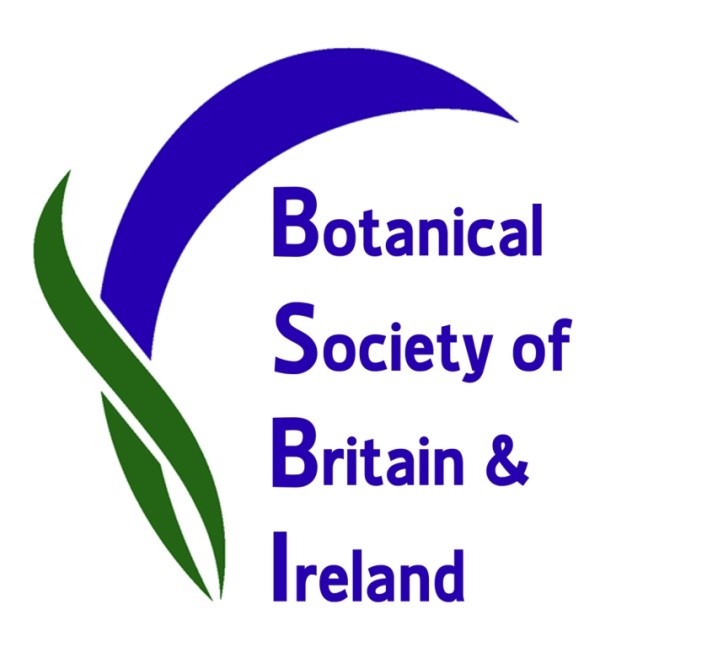Dumfriesshire Botany Group at Langholm, 21st May 2023
On a pleasant warm day a group of seven of us met at the riverside car park Langholm. The plan was to record in and around the town and record plants in their urban habitats following criteria developed by the Botanical Society Scotland for their Urban Flora of Scotland project. Although Langholm is a small place it still qualifies in having more than 1000 residents and had habitat categories like residential, commercial/industrial, parks and greenspace, cemeteries and wild areas like the riverside and pockets of woodland.
Just below the car park the Ewes water meets the Esk. Both carry a lot of stones and gravels from the surrounding hills and these have built up into shingle islands and berms. As the car park is on the riverside we were immediately recording while working along the river. Here there was a good growth of the native Meadow Saxifrage Saxifraga granulata and Creeping Cinquefoil Potentilla reptans. These were alongside the neophytes Fringecups Tellima grandiflora and scattered Giant Hogweed Heracleum mantegazzianum, the latter persistent despite many years of spraying. On the gravels one interesting willow was the hybrid Salix x rubra (Purple Willow S. purpurea x Osier S. viminalis). Its leaves are green sparsely hairy below and intermediate in length between the parent. Both parents were also present in this stretch of river though the Osier was just out of our square. On rocks down towards the bridge near houses there were garden plants like Snow in Summer Cerastium tomentosum and Purple Toadflax Linaria purpurea as well as a nice growth of the native Brittle Bladder Fern Cystopteris fragilis. Later in the day across the river by Telfords bridge there was the double form of Greater Celandine Chelidonium majus.
Across the road we explored a steep wooded bank again with garden escapes catching the eye. Winter Heath Erica carnea was still just in flower. There was a great deal of Hybrid Bluebell Hyacinthoides x massartiana and small clumps of Wood Forget-me-not Myosotis sylvatica, Garden Solomon’s-seal Polygonatum x hybridum and Lords and Ladies Arum maculatum.
We then walked through a residential area along small back lanes. Notable here was Yellow Corydalis Pseudofumaria lutea, the usual range of pavement edge weeds like Whitlowgrass Erophila verna, Thale Cress Arabidopsis thaliana and Sheperds purse Capsella Bursa-pastoris. We were initially puzzled by an annual that had fruit like an Erophila, but was up to 30cm tall with large sessile toothed leaves. This was Wall Whitlowgrass, Draba muralis an uncommon species not recorded before in Eskdale but with records down the A7 at Longtown in Cumbria.
We turned up the Whita road which soon becomes a track running up out of Langholm over grassy moorland to the Whita Hill. Here the vegetation became more heathy on the wide verges . One species that was notable here was Star- of-Bethlehem Ornithogalum umbellatum. This seemed to be O. umbellatum ssp. campestre based on tepals being 18mm and the lowest pedicel 6mm. This is a neophyte ie a long established introduction. Surprisingly this is the first record for NY38. Lunch was taken by the golf course with a view down over the town.
After lunch we made our way down into town and across the river to the parkland and woodland on the west bank. On the riverside Eastern Crack Willow Salix euxina was showing off its hairless leaves and varnished twigs. Other riverside plants were added like Water Avens Geum rivale and its hybrid with Herb Bennet Geum urbanum. Hybrid Avens Geum x intermedium has various intermediate forms but the large drooping yellow flowers here were distinctive. In the churchyard another neophyte turned up, American Speedwell Veronica peregrina. Again a first for NY38. This inconspicuous species with tiny white flowers seems to like cultivated ground in and around habitation. Along the riverside in the park the big Poplars were Western Balsam-poplar Populus trichocarpa with their conspicuous pale under leaf.
The mixed woodland to the south edge of town is a popular walk. It is on very steep ground down to the river and has until recently been closed due to landslips and trees down. It contains good areas of Bluebell Hyacinthoides non-scripta and some other old woodland species like Wood-sedge Carex sylvatica and Woodruff Galium odoratum. A tree that led to some debate was a group of lime. Despite having different sized leaves these were Large-leaved Lime Tillia platyphyllos based on features of their hairiness. This is rarely encountered in Dumfriesshire and likely to have been planted.
Chris Miles
BSBI county recorder for Dumfriesshire VC73 – see bsbi.org/dumfriesshire

